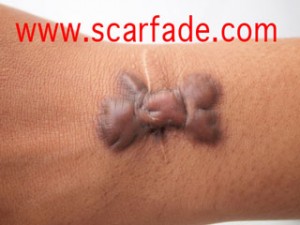
Who’s At Risk for Keloids?
Anyone can develop keloid scars, but some are more at risk than others. According to a study by two doctors atWest VirginiaUniversity, patients with wounds on the arm at or above the elbow joint, on the shoulders, ears, cheeks are more susceptible to keloid scars. They are prominent in people with high trauma to the skin, such as piercings and burns, and those with wounds that take a prolonged time to heal. People who have developed keloid scars in the past are more likely to develop them again. Age is also a factor, more likely to be present in adults under the age of 30. There is also medical evidence that keloid scarring is hereditary. Those with fair skin are less prone to keloid scars than those with darker skin tones.
Keloid Scar Prevention
Several medical studies have found the same result; that it’s easier to prevent keloid scars than it is to make them go away once they have formed. Silicone sheeting, corticosteroid injections and taping the skin in a position that reduces stress on the wounded area are all effective preventive measures.
Keloid Scar Treatment Solutions
Even if they are surgically removed, keloid scars are likely to recur. There are several standard therapies for reduction. Certain types of keloid scar cream can be used alone or in conjunction with methods such as radiation, surgery, steroid injections, cryotherapy and pulsed dye laser treatments.
Not all scar creams are helpful in preventing and treating keloid scars. Scarfade is effective on keloids, especially when the silicone gel or sheeting is used as soon as the wound has healed. It provides constant skin contact, which is a critical component of what makes it work.
